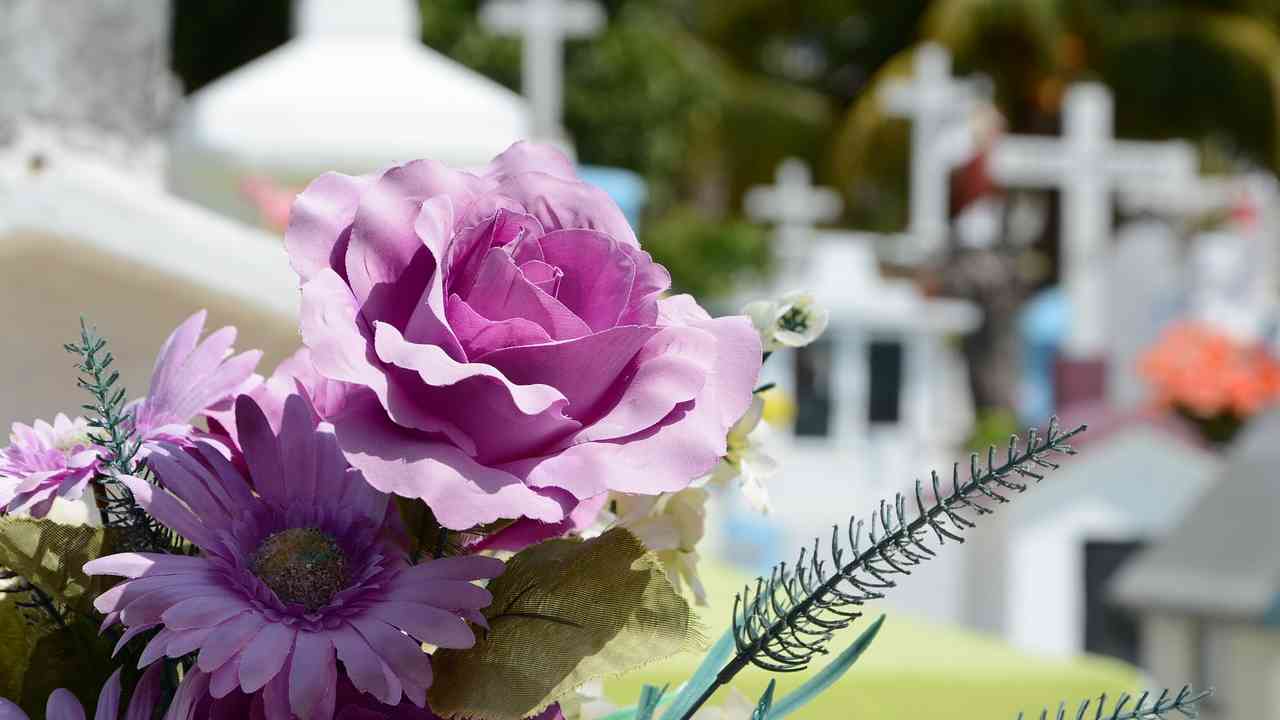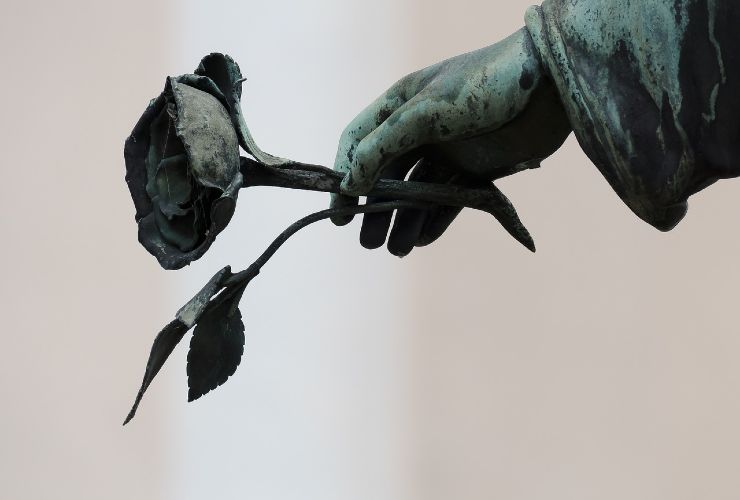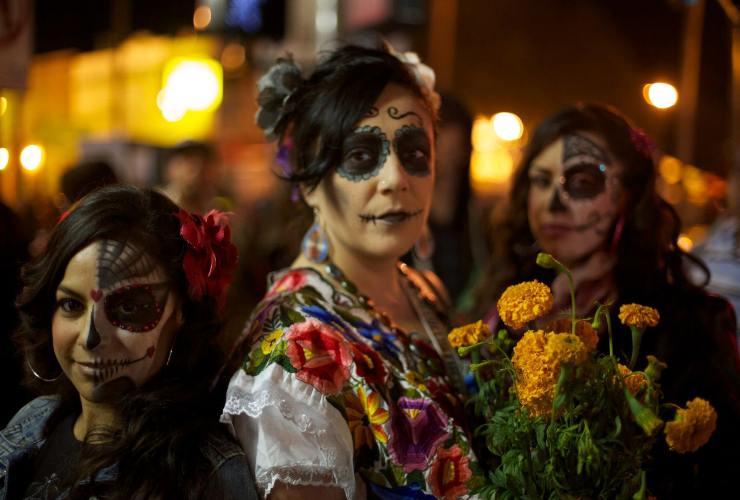Entertainment
Commemoration of the Dead: the meaning of Italy and the world
Published
2 years agoon
By
Robert King
On November 2, the commemoration of the dead is celebrated, also known as the feast of the dead. A day dedicated to memory, but also rich in cultural implications that are also expressed through symbols that vary and multiply in different parts of the world.
November 2 is the day dedicated to the commemoration of the dead. A birthday linked to ancient cultures, in which loved ones are commemorated and honored. In the Christian Church, it is linked to the solemn celebration of November 1, the feast of All Saints, but also in different traditions and denominations, this feast is felt and celebrated in different ways.

Commemorating the dead, the day also called Feast of the Dead, is a custom that dates back to the 9th century and the Benedictine abbot Odilone contributed in 998 to fixing the date after vespers on November 1, by offering the Eucharist: pro requie omnium defunctorum. This action soon resounded in all the monasteries linked to Cluny and distributed in Europe.
The commemoration of the dead in Italy
In Italy, the Day of the Dead has a religious meaning in which the dead are honored and honored at the place which, by Christian definition, is known as Campo Santo (the cemetery). But, in our country, this anniversary is also charged with a strong symbolism to which, in addition to the religious spirit, are attached rites which vary from one region to another. There are many places where the ancient pagan beliefs are repeated that on this night the dead return to Earth. Here, the custom of offering them refreshment after the journey to the afterlife. In Milan and Tuscany, for example, the bread of the dead is prepared. It is a dessert that is also accompanied by the bones and beans of the dead (other sweets), to be offered to the deceased on the night of November 1 to 2.

In Friuli, on the other hand, it was customary to leave buckets of water with a lighted lamp next to it and bread or other food to offer to the dead on the table. In Trentino, the table is set all night and the bells ring to recall the souls of the dead. Moving to Sicily, however, relatives who visited leave gifts for the children. And among the traditions now abandoned, we also remember that of Emilia-Romagna where the poor went from house to house asking for the charity of murt, the charity of the dead. Finally, among the customs, still in disuse, also that of the capital where, in the past, dishes were eaten in the “company” of the dead, in Campo Santo.
Celebrations around the world
In the rest of the world, traditions linked to the feast of the dead are colored with celebration and joy. In this case, it is impossible not to mention the Mexican Día de los muertos, a tradition that became a World Heritage Site on November 7, 2003. It is one of the most important festivals in Mexico. Inside, the tradition and culture of this people are expressed from all angles. The party begins on October 25 and ends on November 4. Each feast day corresponds to the commemoration of a “category” of the dead and more specifically November 1st is dedicated to children. The city is colored with flowery altars where offerings and food are placed. People take to the streets with their typical painted faces and disguises reminiscent of colorful skeletons (calacas) and dances and music rage in the streets.

An important anniversary dedicated to the dead is also one that is celebrated in China and is known as Qingming: Ancestor’s Day. It falls every year between April 4 and 5 and is an opportunity to commemorate the deceased, but also to take care of the resting place of loved ones. Offerings (also in silver) are brought to the grave of the deceased, which are then burned, in the hope that they can thereby reach the loved one in the afterlife. And finally, another fascinating tradition that comes from all over the world is the Diwali festival in India. This anniversary celebrates the triumph of light over darkness and creates a connection with the dead. Lamps, candles, lanterns, the city is flooded with light. Diwali, indeed, brings together all the religions of India, from Buddhists to Hindus, and celebrates life with a certain spiritual charm.
Recent News


Instagram Story Viewer: Shaping Social Media!
Could you think of Instagram without stories? Even though Instagram Stories were introduced not so long ago, in 2016, they...


Top Benefits of Using a Phone Appending Platform for Batch Data Updates
In the world of data-driven marketing, having access to accurate and current contact information is essential for successful customer outreach....


3 Tips for Dressing Perfectly for Special Occasions
Dressing for special occasions can sometimes be a stressful and overwhelming process, especially for women. Whether you’re attending a wedding,...


Maximise Your Hunting Success with Dive Bomb Industries Decoys
When it comes to hunting, there’s no such thing as too much preparation. Hunters understand that the right equipment can...


Castle App Free Download — Updated 2024 Version
What is Castle App? Castle App, a stream app developed for streaming media content, makes entertainment effortless by giving clients...


How to get a duplicate RC book for your vehicle: A step-by-step guide
If you have lost or damaged your vehicle’s registration certificate, you must be tense and under stress. But getting a...


Enhancing Property Value Through Professional Builders Cleaning Services in the UK
Construction and renovation projects make a ton of residue, garbage, and soil, passing on a requirement for proficient cleaning to...


Saturn in Sidereal Pisces-March 28,2024 to February 21st 2028 by Jade Luna
I really wanted a female president governing this cycle but the chart of America would choose the hardest path, not...


Top 5 Super Clone Rolex for Women
Super clone Rolex watches are incredibly detailed knock-offs of popular Rolex models, crafted to look and feel just like the...


Transforming Dreams into Reality: A Success Story of Purchase Amazon Seller Account
Purchase Amazon Seller Account: In the fast-paced world of e-commerce, many aspiring entrepreneurs dream of starting their own business. However,...
